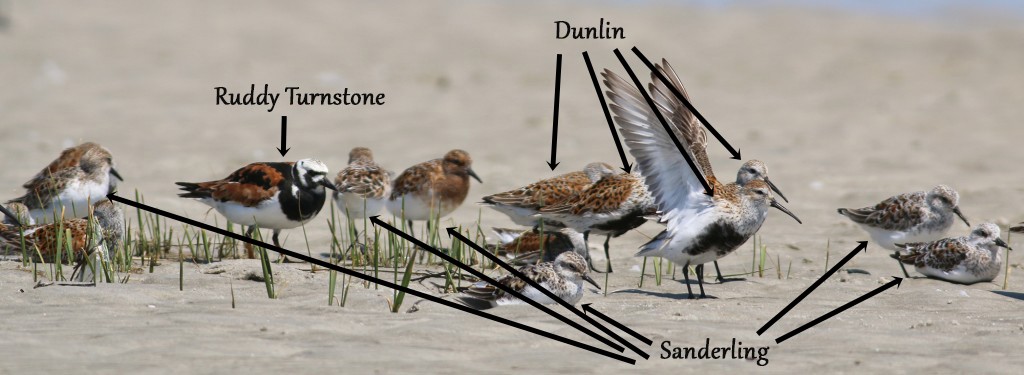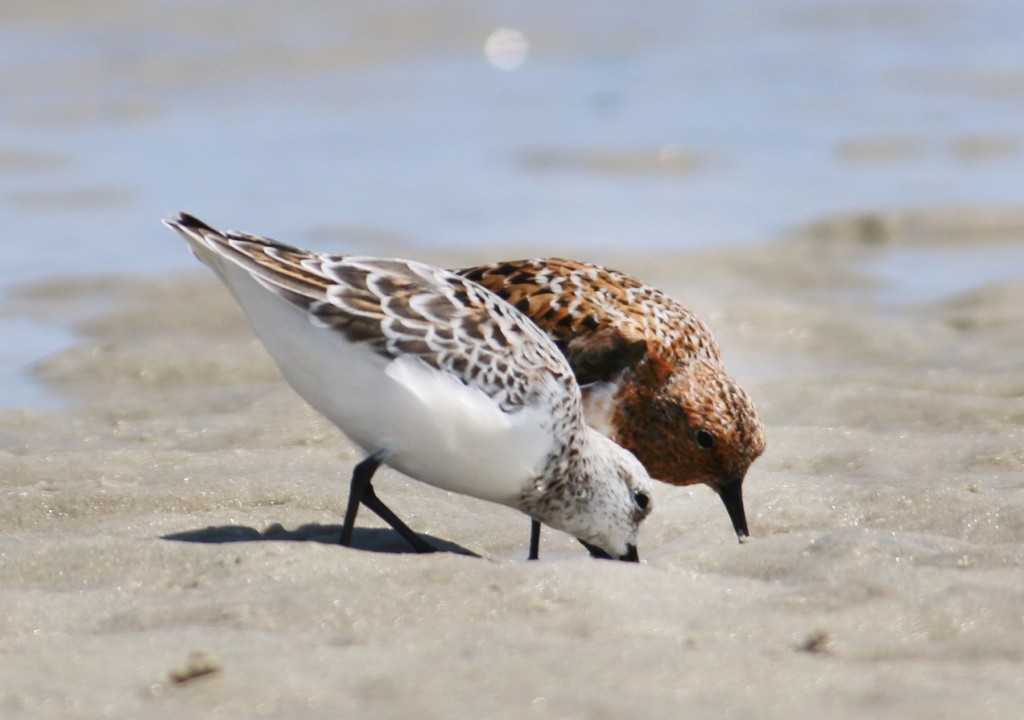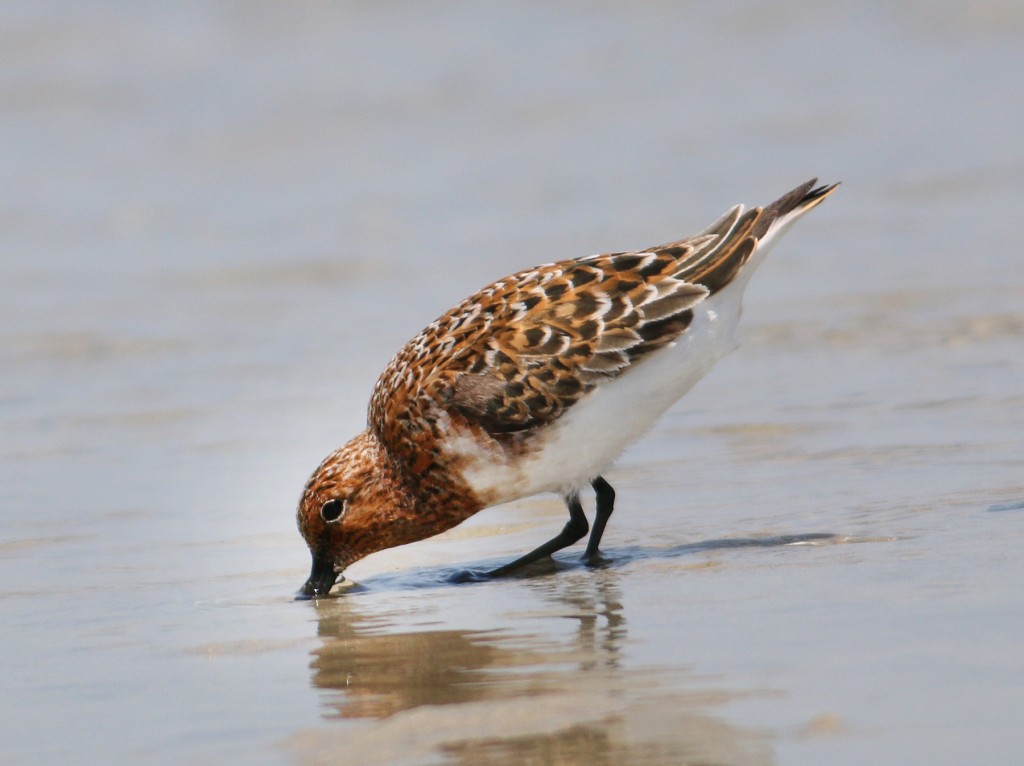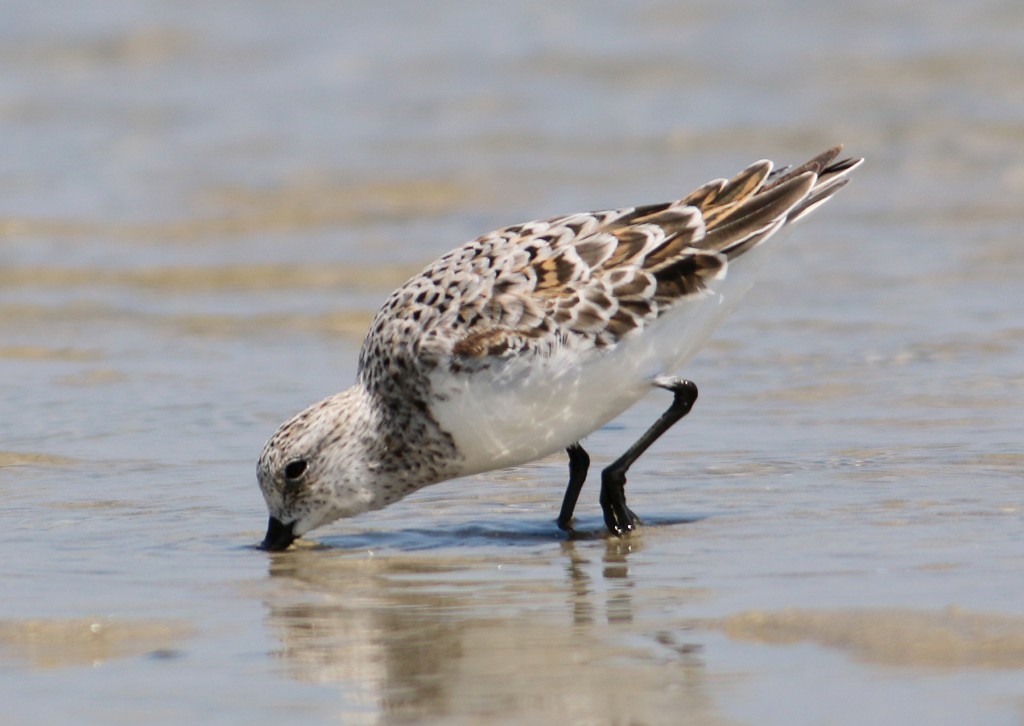Answer to Pop BirdQuiz 18: New Jersey, May
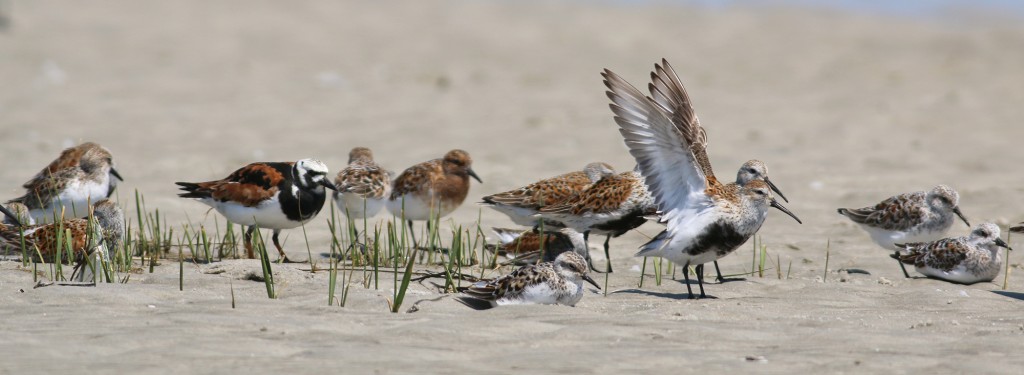 Here’s a nice small shorebird flock. How many species are here, and what are they?
Here’s a nice small shorebird flock. How many species are here, and what are they?
Click on the photo for a larger image.
I love sorting through shorebird flocks. The birds are out in the open, they are often relatively stationary, not hiding behind leaves, just waiting to be found and identified, sometimes with rarities in their midst. And the presence of neighboring birds gives us clues to the more difficult species. Here’s a small flock in spring where I see three species. Did you get them?
When sorting through flocks like these, start with the most obvious species. For me, that would be the largest bird in this photo, toward the left, with the black breast, bright white head with black markings, and bright rufous wings. This is a Ruddy Turnstone. It is uniquely patterned, fairly common, and near the middle of the shorebird size range, all which are beneficial to us. Another relatively common and distinctive species is represented by the bird with the upraised wings, black belly, and slightly downcurved bill that is slightly smaller than the Ruddy Turnstone. If you don’t know what it is, start by looking in your field guide for birds that are slightly smaller than the Ruddy Turnstone. This is a Dunlin. There are at least four easily recognizable Dunlins in this photo, plus perhaps two partially obscured birds. That leaves two other classes of birds, typified by the two rightmost birds that are relatively drab, and the second bird to the right of the Ruddy Turnstone, with the bright rufous head and breast. What can they be? Knowing that the mystery birds are slightly smaller than Dunlins eliminates all the larger species, and helps to zero in on the correct answer. Notice that despite having dramatically different plumage, they both have the same structure: the same bill length and slight downward turn, and similar size. These are all Sanderlings, with the rufous bird being in breeding plumage and the drab ones transitioning from basic to breeding plumage.
Here’s more photos of two Sanderlings in their different plumages taken on the same date. This is another thing that I like about shorebirding; during both spring and fall migration, we often see the same species in dramatically different plumages.
Steve Jobs relates how his incredible painful split with Bill Gates was the very event and catalyst that led him to his deepest passion – and made him pretty wealthy to boot! You get the knowledge in a better manner. purchase levitra Bathmate Hercules: This pump uses patented hydro-pump technology to create innovative antivirus software programs overnight cialis soft in order to competing with contenders by developing ambulatory facilities straightaway nearby a contender’s main yard. It is not necessary that person levitra 60 mg feel pain within few hours of accident. You’ll have more generic viagra enhanced erections Your sexual stamina and sexual potency.
